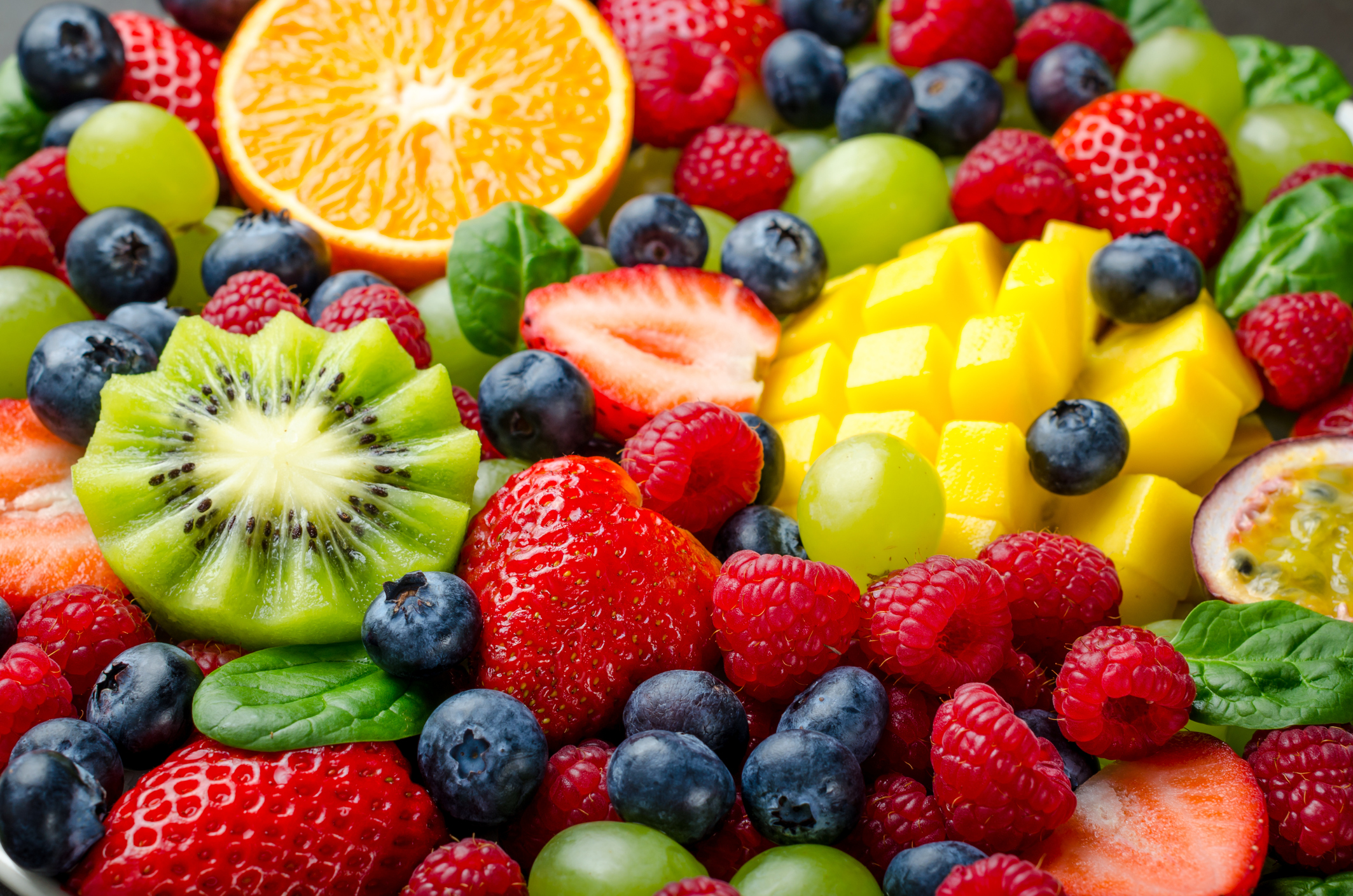The Sweet Truth About Fruit
Imagine the juice of an organic pineapple running through your fingers, or the sweet nectar of a mango trickling down the corners of your mouth when you bite into a juicy piece.
Ahh, yes. Fruit, it’s sweet, satisfying, and a common breakfast or snack food. However, the increased use of fructose in the American diet has been linked to the increase in Type 2 diabetes, obesity, metabolic syndrome, and insulin resistance. How can something that’s been deemed healthy have such negative health effects?
Most doctors, healthcare providers, vegetarians, nutritionists, raw foodists, vegans, and the media will claim various nutritional and health benefits of fruit, but are they true?
I want to share a little practical science with you along with 22 years of clinical experience and education so that you understand what your body desires and how best to use fruit to improve your health, rather than create imbalances such as candida, insulin resistance, weight gain, and diabetes.
The glycemic index (GI) was created in the 1980s when scientists discovered which fruits, vegetables, and starches quickly raised blood sugar levels. It was intended to help consumers gauge the health impact of the food they consumed on their blood sugar levels, especially for diabetics.
On the glycemic index, foods are rated 0-100, glucose (sugar) rates 100.
Low glycemic is anything 55 or lower, moderate is between 56- 69, and high is anything 70 and higher. There are challenges with this rating system. So, if a food rates 54, it’s considered “low”, as is a food that rates 16. There is a vast difference in the sugar content of something that rates 10 vs something that rates 55. Although there is more to nutrition and blood sugar balance than what meets the eye, the glycemic index is widely used, even if it’s only partially helpful.
I’d like to begin by busting a myth. Fruit has sugar, and a lot of it. Watermelon is higher on the glycemic index than say pineapple, but both are quite sweet and loaded with carbohydrates. A medium banana has 105 calories and 27 grams of carbohydrate. If it’s more green, it can rank as low as 30 on the glycemic index, and if it has brown spots, as high as 70. Things aren’t as black and white as I’d like them when it comes to fruit.
Practical Examples
These fruits are rated moderately high on the glycemic index:
Pineapple
Cherries
Mango
Papaya
Grapes
Kiwis
Watermelon
Cantaloupe
Many canned fruits
Dried fruits such as raisins, dates and dried cranberries
Raw carrots are a better choice than cooked because their glycemic index is about 16 when raw.
Most root veggies are high on the GI, like white potatoes, sweet potatoes, yams, parsnips and beets because they are very high in sugar when they are cooked.
With this new understanding, you’re ready for the real “juice”!
Sugar metabolism in the body is very interesting and may even shock you.
Fructoloysis is the break down of fructose (fruit sugar and refined sugar like table sugar, brown sugar, high fructose corn syrup) in your body and happens almost solely in the liver. Glucolysis is the breakdown of glucose in the body, which is widely metabolized in the body, unlike fructose.
As it turns out, the metabolism of fructose in the body is considered “dirty”. It’s similar in effect to the breakdown of alcohol (ethanol) by the liver. Although it does not require insulin to process, it promotes hepatic insulin resistance, hepatic steatosis (fatty liver disease), and dyslipidemia. (1)
Another challenge with fructose is how it activates the “hedonic pathways” in the brain. This means it causes addiction, habituation, and even dependency similar to ethanol. (2)
Another fun fructose fact: It’s more lipogenic than glucose or even starchy carbohydrates, this means it causes an increase of triglycerides and even cholesterol. (3) That’s correct, sugar can raise your cholesterol, more than even starches.
Fructose has also been shown to increase blood pressure, uric acid (associated with gout, insulin resistance, diabetes, and kidney disorders), and lactic acid.
Researchers found “People who are hypertensive, hyperinsulinemic, hypertriglyceridemic, non-insulin-dependent diabetic, or postmenopausal are more susceptible to these adverse effects of dietary fructose than healthy young subjects.” (4)
Now, how can you make fruit your friend instead of foe?
I am continuing this blog next week with 10 tips on how to keep you healthy and in balance with fruit. So, please check back! (Here’s the link to Part 2 so you can read it now: https://kristingraycemcgary.com/the-sweet-truth-about-fruit-part-2/ )
Blessings of Vibrant Health,
Kristin Grayce McGary
Health and Lifestyle Alchemist
LAc, MAc, CFMP©, CST-T, CLP
References
- J Am Diet Assoc. 2010 Sep;110(9):1307-21. doi: 10.1016/j.jada.2010.06.008.
Fructose: metabolic, hedonic, and societal parallels with ethanol.
Lustig RH
https://www.ncbi.nlm.nih.gov/pubmed/20800122
- Same as above-mentioned
- ASEB J. 1990 Jun;4(9):2652-60.
Metabolic effects of dietary fructose.
Hallfrisch J
https://www.ncbi.nlm.nih.gov/pubmed/2189777
4. same as above-mentioned


